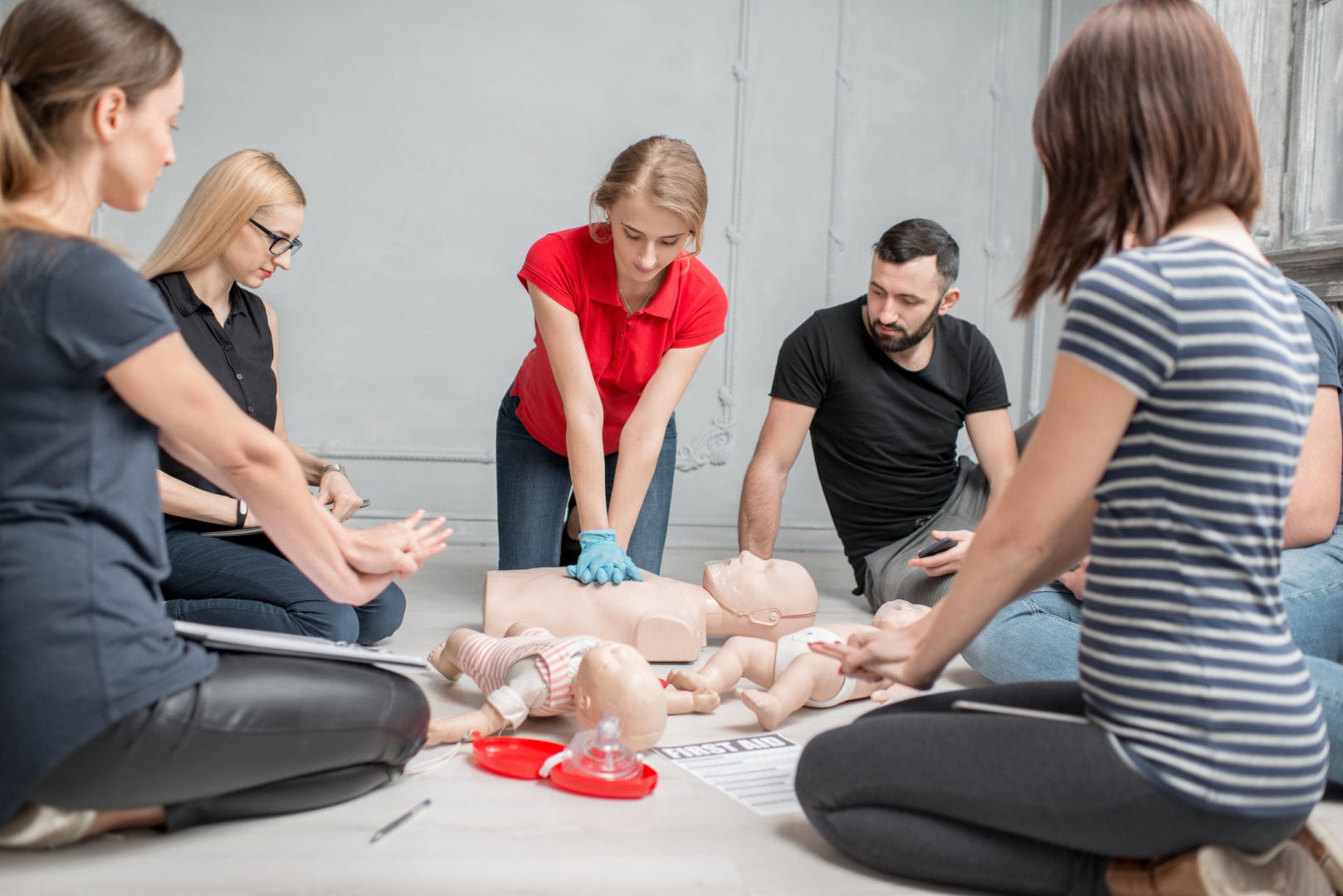It’s not fun to think about emergencies. But as much as you hope they’ll never happen, you do have to be prepared. CPR and first-aid are things that everyone — especially people who care for children — should know.
You may not realize the importance of first-aid or CPR certification until you’re faced with a life-threatening situation. For some, an emergency may never occur, and for others, it may happen more than once. Whether you’re a new parent, a senior care aide, a nanny or a budding babysitter, the value of CPR and first-aid training is priceless in an emergency. Here’s how how to get CPR certified and obtain your first-aid certification.
The benefits of CPR and first-aid certification
CPR and first-aid training will teach you:
- How to check the scene of the emergency.
- How to determine the needs of a victim.
- When to call 911.
- First-aid skills for controlling bleeding and treating cuts, scrapes, bee stings, insect or snake bites, etc.
- The signs and symptoms of a heart attack, choking, etc.
- How to treat sudden illnesses.
If you’re a parent or nanny, you know that kids like to put anything and everything into their mouths — from bugs to toys. And they’re always getting new scrapes and cuts. First-aid and CPR training can help prepare you for tackling these common childhood injuries.
In addition, CPR and first-aid training is a necessary skill for caregivers to have — and it looks great on a resume. Businesses and families like to see it, as it means you’re serious about taking care of others. If you have the training, mention it in your job profile or application.
Even better: Caregivers who are CPR and first-aid certified are 2.5 times more likely to be contacted by families!
How to get CPR and first-aid certified
1. Find a CPR and first-aid certification course
You can find either online or in-person courses in most areas. Many local hospitals and community centers offer programs or can point you in the right direction. You can also find CPR and first-aid certification courses online via:
2. Decide which type of first-aid and CPR course is right for you
There are a variety of different CPR and first-aid courses, aimed at helping both adult and child victims. The options include:
- Adult, child and baby first-aid and CPR.
- CPR, first-aid and automated external defibrillator (AED) training.
- Pediatric first-aid, CPR and AED training.
- Babysitter and child care training that includes first-aid and CPR.
Classes are also offered in-person (by searching one of the above sites using your zip code), via e-learning or through blended learning, which incorporates both online and in-person components of the course.
3. Prepare for the time commitment of CPR training
The lengths of the different classes vary, but all are relatively short for the amount of potentially life-saving information conveyed.
“Courses typically run anywhere from three to five hours and can be done all in one shot or multiple sessions,” says Don Lauritzen, a spokesperson for the American Red Cross. Plus, you can usually find daytime, weeknight and weekend classes that can accommodate any schedule.
4. If you’re already CPR and first-aid certified, take a refresher class
Most CPR and first-aid certifications are good for two years. Once you’ve completed a course, ask about access to free digital skills refreshers.
“Of course, it’s important to become CPR and first-aid certified, but it’s equally vital to take refresher courses.”
—Don Lauritzen, spokesperson for the American Red Cross
“Of course, it’s important to become CPR and first-aid certified, but it’s equally vital to take refresher courses,” Lauritzen says. “You may have taken training years ago, but it’s better to be up-to-date and confident in your skills in case of an emergency.”
Other ways to prepare for emergencies
In addition to seeking CPR and first-aid certification, you should also have a completely stocked first-aid kit in your car, home, office and diaper or nanny bag. It’s essential for any emergency — from scraped knees and snake bites to car accidents and earthquakes. Your first-aid kit should include:
- Different size bandages.
- Antibiotic ointment.
- Aspirin.
- Hand sanitizer.
- Gauze and adhesive.
- Scissors.
- Compress dressings.
- Hydrocortisone.
- Non-latex gloves.
- An instant cold and hot pack.
- Tweezers.
You can also purchase ready-made first-aid kits online or at most pharmacies. In addition to having a fully stocked emergency kit, it may also be helpful to download the American Red Cross: First Aid app. This app provides step-by-step instructions for first-aid in a variety of situations and can even instantly connect you with 911 or other medical experts.
The bottom line
CPR and first-aid certification is essential for nannies, babysitters and anyone else who works and lives with children. Not only can it save lives, but having this training also helps you get noticed when looking for jobs.
In an emergency, you should always dial 911 first. But you should also have the skills to detect, assess and treat victims until professional medical personnel arrive. That’s where first-and CPR certification comes into play. It’s an important ability that can save lives.




